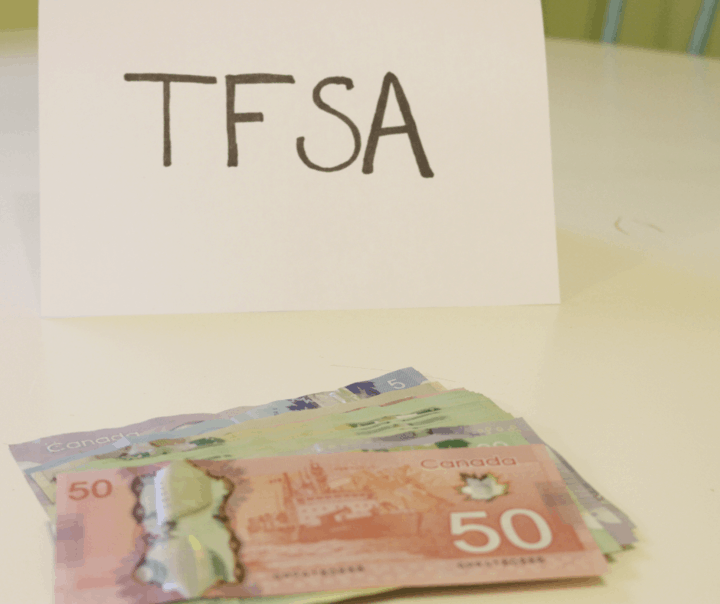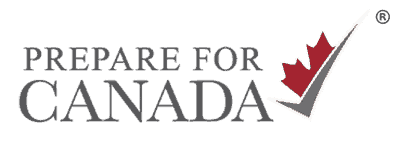
Newcomers should know about the different types of bank accounts to use all the financial resources available to them. Knowing what each bank account is for will help you to put your money in the right place. Opening a bank account is one of the first things you do upon arrival in Canada. A bank account is a place where you can keep your money safe. And buying a house or using a debit card to pay at a grocery store would not be possible without a bank account. As well, a bank account makes you eligible for a loan such as a mortgage and is a convenient way to store your money.
What is a Bank Account?
A bank account is an account in which you can deposit and withdraw money. These transactions can be both negative and positive. A positive transaction is when you deposit money in your bank, making your account balance go up. A negative transaction is when you take out money from your bank account, making your account balance go down. These transactions decide what your account balance is, or how much money you have in your bank account.
Advertisement:
With your bank account, you can store large amounts of money that you can withdraw at any time. However, not all bank accounts will allow you to withdraw money at any time. There are two main types of bank accounts; a chequing account and a savings account.
Opening a Chequing Account
Advertisement:
Opening a chequing account will probably be the first thing you do in Canada because it is the account you will use for your day-to-day expenses. It allows you to withdraw money at any time, making it a convenient way to pay for expenses such as your grocery bill and withdraw money from an ATM. Opening a chequing account will also get you a debit card. A debit card is a card that can make payments without cash. Almost every store in Canada has a debit card terminal so you will almost always have the option of paying digitally from your chequing account.
One thing to keep in mind is that most chequing accounts have a small monthly service fee as long as the account is running. Most chequing account service fees are usually around the $10 range. However, some chequing accounts have no service fees, called no-fee chequing accounts.
Some chequing accounts also offer ways to avoid paying monthly service fees. Some ways to avoid service fees are to either maintain a set minimum balance or deposit a certain amount of money into the account each month. The minimum deposit is usually around $5000. This means that if you have more than $5000 in your chequing account, you will be charged no fee that month. A minimum deposit usually ranges from $300 to $500. This means you need to deposit at least the minimum deposit amount in order to avoid paying your chequing account fees.
Related Posts:
Top 10 Financial Steps to Take Before You Leave for Canada
Financial Literacy is Important for Newcomers
Advertisement:
Cost-Saving Ideas: 22 Practical Tips for Newcomers
Banking in Canada: Your Financial First Steps

Opening a Savings Account
Opening a savings account allows you to save and grow your money. Unlike your chequing account, a savings account earns you interest on the money you save. However, a savings account cannot be used for day-to-day expenses. There is a fixed number of transactions you can do from your savings account each month, and that number is usually three. If you do any more transactions than that, you will have to pay transaction fees which make a savings account inconvenient for daily expenses.
Opening both a savings and a chequing account is a great way to manage your money. Together, they have all the features to meet your financial needs. You can keep the money you need for your daily expenses in your chequing account while keeping any additional money in your savings account. That way, you can pay for your expenses while earning interest on the rest of your money.
Now let’s look into some more specialized types of bank accounts that will help you save for the future.
Types of Bank Accounts to Help You Save for the Future
Canadian banks have many resources to help you achieve your financial goals. Some of those resources include specialized bank accounts. The types of bank accounts covered in this section will help you achieve your financial goals faster. These accounts are all registered, meaning they are registered with the Canada Revenue Agency (CRA) to provide tax shelters. All the specialized accounts listed below are great saving resources because they can help you save on taxes.
The accounts covered in this section are Registered:
- Retirement Savings Plan (RRSP)
- Education Savings Plan (RESP)
- Disability Savings Plan (RDSP)
Learn about Registered Retirement Savings Plans
Opening an RRSP is a great way to save for your retirement. An RRSP works by delaying when you pay taxes on your income. This can be both to your advantage and disadvantage. The reason this is considered a retirement savings plan is because you will be in a lower income tax bracket at the age of retirement.
When you deposit money into your RRSP, it will come off your income directly and won’t be considered taxable income. For example, if your income is $50,000 and you decide to put $5000 toward your RRSP, the government will only make you pay income tax on $45,000 of your income.
This doesn’t mean you don’t have to pay taxes on that money in the future. When you withdraw money from your RRSP, that money will be considered as your income, and you will be taxed on it.
So then what is the point of RRSPs? If it saves you from taxes now, only to make you pay taxes in the future, why open an RRSP account? The answer is simple. You will have to pay more taxes when you are earning compared to when you are retired. When you take out money from your RRSP at retirement, you won’t have to pay as much income tax compared to when you were working.
Learn about Registered Education Savings Plans
As the name suggests, opening an RESP will help you save for your child’s education. Here is how an RESP works.
Every time you deposit money into your RESP, the government of Canada will contribute some money to your RESP as well. This money is called Canada Education Savings Grant, or CESG. A basic CESG is 20% on top of your deposit. However, low-income families might qualify for a 40% CESG.
To put this into perspective let’s look at an example.
Let’s say you deposit $2000 to your RESP this year. With a basic CESG, the government of Canada will contribute an additional 20% of that $2000 to your RESP.
$2000 x 20% = $400.
After your $2000 deposit, your RESP account balance will be $2000 (your contribution) + $400 (government’s contribution), which is $2400.
Learn about Registered Disability Savings Plans
An RDSP is a savings plan intended to help people with disabilities save for a financially secure future. It works very similarly to an RESP. The government contributes money for every dollar you put in your RDSP. Unlike an RESP, however, RDSPs offer incredible returns, even as much as triple your contribution. The money contributed by the government is called the Canada Disability Savings Grant, or a CDSG. CDSGs will vary from person to person so they can even be as high as 300%!
RDSPs are an amazing way to save for the future and ensure a financially secure future for anyone with a disability. They offer some of the best returns on investments in Canada so if you are eligible for an RDSP, look into getting one.
To learn more about registered accounts in Canada, here is an article on RRSPs, RESPs, and TFSAs that explains each of those in detail, as well as some frequently asked questions.
Types of Bank Accounts to Grow Your Money
Traditional savings accounts offer very low-interest rates. It is safe to say that putting all your money into your savings account is not the fastest way to grow your money. There are many other ways to grow your money, whether it be through tax shelters or high-interest rates.
The bank accounts covered in this section are:
- Certifcate of Deposit (CD)
- TFSA (Tax Free Savings Account)
- High-yield online savings accounts
Certificate of Deposit
A certificate of deposit (CD) is a savings account that offers higher interest rates than normal savings accounts. The catch is that you must agree not to withdraw that money for a set period of time. CDs can range anywhere from three months to five years. Something to keep in mind is that CDs that last longer tend to pay higher interest rates.
In simple words, CDs are accounts in which you deposit money over a set period of time, for a fixed interest rate. Withdrawing your money before the CD ends will result in a penalty. This penalty will not only make you lose all the interest you earned, but it will also make you lose part of your original deposit.
As you can see, CDs have both benefits and disadvantages. How would you know if a CD is good for you?
If you have money that you know you won’t need in the next two years, you could look for a CD that lasts two years. For example, if you know you will buy a house in exactly two years, try to look for a CD that will give you good interest for the next two years. That way, you will grow your money at a higher interest rate and still have access to your money when you need it.
On the other hand, CDs may not be a good option if your financial situation is unreliable and you might need money at any time. Before buying a CD, you must be certain that you won’t need to withdraw any money before your CD ends. If you cannot guarantee that, CDs may not be your best option.
Tax Free Savings Account
A tax-free savings account is one of the best accounts in terms of tax shelters. Unlike an RRSP, the main purpose of a TFSA is to grow your money without having to worry about taxes. It functions exactly opposite from an RRSP. The money you deposit into your TFSA is after-tax money, meaning you won’t save any taxes there. The benefit of a TFSA comes when you withdraw money. Any money you take out of your TFSA will not be taxed. This makes TFSAs a great investing account because any profit you make within your TFSA will not be taxed.

Opening TFSAs are great for people who want to start investing in stocks, mutual funds, bonds, or GICs. Since any money you withdraw from your TFSA is tax-free, any profits you make within your TFSA are not tax-deductible.
High-Yield Online Savings Accounts
High-yield online savings accounts are accounts that are based completely online. However, since these banks don’t have a brick-and-mortar presence, they can offer higher interest rates, risk-free. In Canada, Tangerine is a bank that offers online banking, mobile banking, or telephone banking only which allows it to pass savings on to you, the customer.
A disadvantage to online banks is that it can take a couple of days to deposit money into them, so it isn’t very convenient to keep depositing money each month. If you have some money that you know you won’t need for a long time, you can choose to put it into an online savings account and just leave it there to grow for some time. The concept here is very similar to a CD, except there is no set period of time and no penalty for withdrawing money.
Remember that online banks function just like banks. This means that you can get CDs from online banks as well. Online banks usually offer higher interest rates for CDs than regular banks so this is something you may want to look into.
Select the Type of Bank Account that’s Right for You
When you know about the different types of accounts, you can open a bank account that best meets your needs. Knowing what each bank account is used for, and the pros and cons will allow you to put your money in the right place.
For more information about your financial first steps in Canada, visit our banking in Canada resource page. Get the essential information you need to manage your finances in Canada!

My name is Zain Usmani and I am a freelance content writer who currently resides in Mississauga, Ontario. I immigrated from Pakistan to Canada 5 years ago and have lived in many cities ever since. I have lived in Calgary AB, Edmonton AB, Regina SK, London ON, and Mississauga ON, while visiting over 40 Canadian cities and towns. I have a great passion for writing and I love helping people through it.

